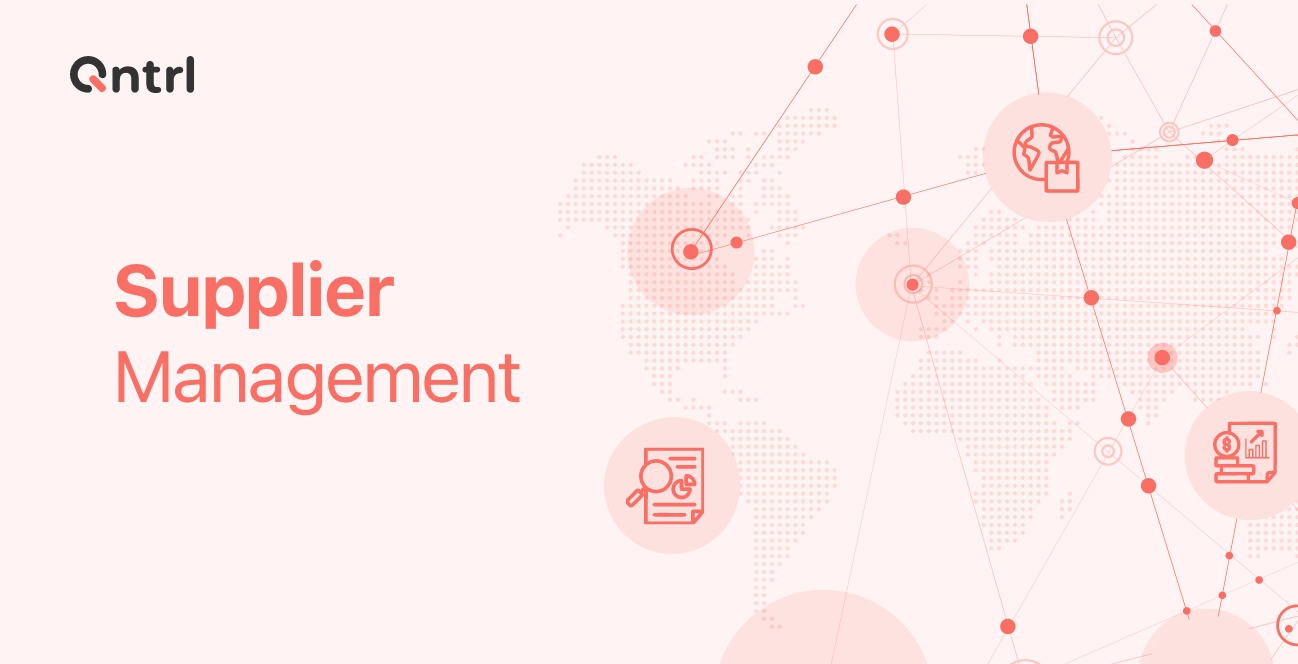Procurement today is no longer just buying goods; it has evolved into a process that requires a meticulous and strategic approach. Organizations today are in a pivotal position—to make their procurement process as efficient as possible, while minimizing spending.
Let's take a look at a few of the common procurement challenges faced by companies today.
1. Poor vendor relationships
Vendor management is the art of building reliable and successful relationships with your vendors. Finding proficient suppliers and qualifying them through a meticulous process is extremely strenuous. Managing them is yet another task. When not done properly, organizations tend to face a host of complications, like vendor fraud, delayed delivery, missing shipments, noncompliance, issues with invoices, and an inefficient supply chain loaded with unskilled vendors.
In order to maintain long, healthy relationships with vendors, there has to be transparency throughout the process. With the help of a process automation tool, companies can assign orders to the right vendors with the best quotes, and easily establish real-time communication with them. This provides faster resolution of grievances, on top of saving time and money.
2. Lack of visibility
When there are no effective methods for you to keep track of all your data, requests, activity logs, process checks, statuses, and updates, it poses a major challenge for you. It also becomes tough to make informed decisions about purchases and vendors.
For example, you might be working on a spreadsheet that is not frequently updated, or juggling between systems or emails for purchase-related information. Due to paper trails like this, you can end up losing valuable information. You might also face difficulties keeping track of your work in progress, and this stops you from thinking and acting strategically. All this can have an adverse effect on the quality of the goods or services delivered.
By incorporating automation into your procurement process, you gain the advantage of having a centralized repository for information sharing and communication. You can always stay on top of things as you track your activities in real time and make informed decisions, with regards to your purchase. This makes the overall process more efficient.
3. Inability to manage risk
The long-winding supply chain, and the goods and services that it handles, bear a lot of risk, including theft, invoice fraud, fluctuating prices, delivery of substandard products, and policy breaches. These risks have a significant effect on the company's bottom line and competitive advantage.
To evade these risks, organizations need to assess potential risk beforehand and not engage in the activities that cause it. Alternatively, organizations can minimize their risk by finding ways to handle when unfavorable situations occur. These risks are best managed with tools that can incorporate business policies as rules.
4. Invisible spending
Invisible spending—or dark purchasing—is a problem that companies often overlook. This occurs when companies purchase more than the required number of items, or place duplicate orders or orders for the wrong items. In such situations, companies end up spending inappropriately and lose their grasp on how much money is spent, which results in loss of revenue. And in cases where the vendor is unauthorized—selling illicit and counterfeit goods—it includes security risks as well.
One solution to this is implementing a policy where goods are always purchased from a legit vendor, and by adapting to an efficient procurement process that has multiple levels of checks and approvals before the order is placed. This eliminates excess spending and counterfeit goods.
5. Data inaccuracy
Even in this era of digital transformation, there are organizations that rely on manual process for data entry. This often leads to errors, with incorrect data being entered. With inaccurate and unreliable data, organizations cannot make crucial procurement decisions, resulting in problems with inventory shortages, inventory surplus, or approval workflows getting stuck. This has the potential to affect the bottom line of the company.
To overcome this, organizations should have a centralized data management system. It gives access to more accurate and updated data, and helps in better analyzing, planning, and making macro-scale decisions.
6. Lack of technology
Not all organizations have the willingness and openness to adapt to change. Most are hesitant to implement new technologies and tools into their procurement process, and prefer operating manually. Unfortunately, this process is prone to human error, provides no scope for seamless information sharing and communication, and hinders the company's efforts at scaling up the business.
But the addition of technology like workflow automation can streamline the procurement process. A workflow automation tool acts as a centralized platform to manage all procurement-related activities, eliminate human error, identify bottlenecks, reduce risk, maximize savings, and make the process more reliable and efficient. Digitizing procurement management saves time and helps focus more on strategic concerns.
Process automation is the solution to all your procurement-related challenges
A manually operated procurement process might seem simple at first, when you run a small-scale business. But as you expand your operations, the process becomes challenging and, ultimately, a threat to the company's success. With the right tools and technology in place, such challenges can be conquered easily. By adding automation into your procurement workflow, the process gets streamlined and adds value to your business.
Qntrl is powerful workflow orchestration software that can automate your procurement process and make it more streamlined and reliable. Try it now!








